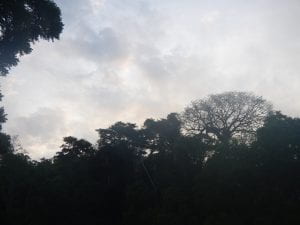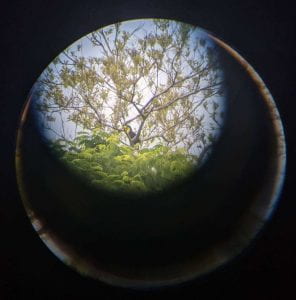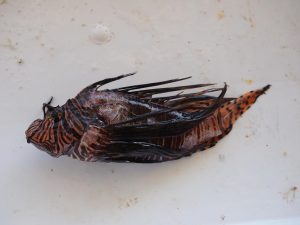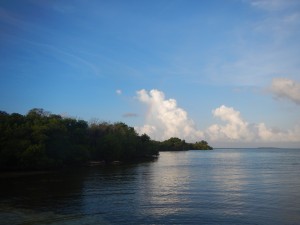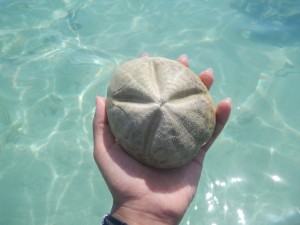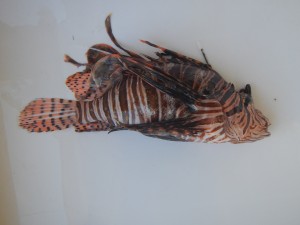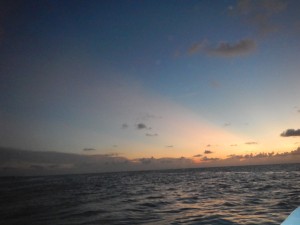Today started off with a clear, sunny morning! Thus far, it has only ever been cloudy or rainy, so an extended period of sunshine was surprising. This really helped today’s morning birdwatch! I was the first one awake and out on the patio, so I got myself a cup of coffee and enjoyed the landscape and bird chorus.
I saw a new bird! Michael and I spotted a very small bird on a bare, exposed branch. It had a mainly brown coloring with a purple/blue shimmer to it on its back. It also had a faint light eyeline and a light-colored throat. Its breast was yellow, and it had small wings with two wingbars and a short tail. When I looked in the bird field guide, I identified it as a yellow-throated euphonia!
After breakfast, we retrieved all of the experiment-related materials that were in the Chiquibul Forest. So within the span of 40 minutes, we collected all of our water and pee tubes. In the classroom, we analyzed our collected data by calculating the abundances of the arthropods in each group (pee/water and canopy/floor). We cleaned and packed up all of the materials for this experiment, and we started our poster.
Then, a small group of seven TFBs and Adrienne left on a speed mission to collect all of the camera traps we placed on the first day. The hike that took us almost 7 hours to complete when setting up the cameras two days ago took us 1.5 hours today! We retraced our steps with incredible speed and were unexpectedly cooled off with the heaviest downpour of rain we’ve had yet.
While I was speed hiking, Liliana took an amazing picture of a keel-billed toucan! This is the national bird of Belize, and while I’ve been seeing them around LCRS, I haven’t been able to get a picture. These massive birds have fittingly massive beaks. Their bodies are black with a yellow mask, throat, and breast, as well as a white and red rump. Their green/yellow beaks also have red, blue, and orange patches, and their eyes are ringed with faint green. Watching them fly is almost comical because they hold their beaks to be directly in line with their body, making them look like they have thick necks and pointed heads when silhouetted by shadow.
Another great day in the rainforest! My rubber boots are now next-level dirty, but the filth is definitely worth it!
– McKenna

